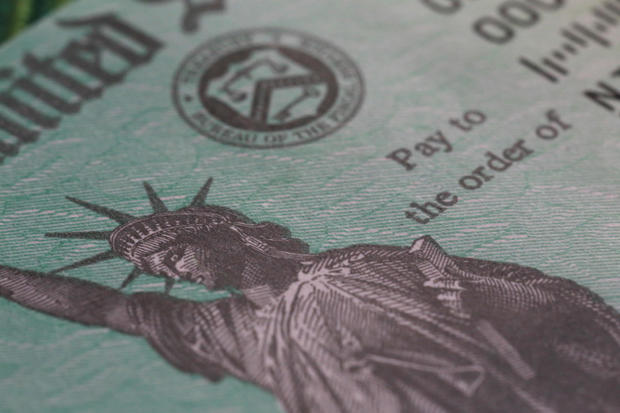3 ways to get a bigger tax refund
The complexity of the tax code can make filing taxes a chore, but you can also use it to your advantage. The many possibilities for tax deductions and tax credits, for example, can help you legally reduce your tax liability. In doing so, you can end up getting money back — i.e., a tax refund — after filing taxes.
To maximize your tax refund, plan throughout the year so you have time to implement more tax-saving strategies. "Don't wait until December to start," advises Sallie Mullins Thompson, principal and managing member at Sallie Mullins Thompson, CPA PLLC.
That said, you need to be knowledgeable about taxes ahead of time.
A tax preparation service can help put you on track toward getting your refund.
So, to put you on the right track before tax season, here are some of the top things you should know to maximize your tax refund.
How to calculate your tax refund
Qualifying for a tax refund means you paid more than your legal tax liability. Calculating your tax refund is simply a matter of figuring out the difference between these two areas. Online tax calculators from tax filing companies enable you to input several variables, like annual income and expected deductions/credits, along with taxes paid, to determine your refund.
What does getting a refund look like? Suppose your employer withheld $20,000 in taxes from your paychecks throughout the year. But when filing taxes, perhaps you claim several tax credits and deductions that reduce your taxable income, thereby bumping you into lower tax brackets.
So, maybe your total tax liability for the year equates to $15,000. In that case, you would get a $5,000 tax refund ($20,000 already paid minus $15,000 owed in total).
Keep in mind there's no limit to the size of a tax refund. You can even get a bigger tax refund than what you already paid in taxes. That's because some tax credits — like the Earned Income Tax Credit, geared toward low to moderate-income workers — are refundable. In other words, you can have a negative tax liability and get more money back than what you paid.
There are multiple tax preparation professionals to choose from. Check out the details to see which one could work best for you.
3 ways to increase your tax refund
The top ways to maximize your tax refund can vary depending on personal circumstances. Business owners, for example, often have different tax strategies than employed individuals. And a young single parent might have a very different approach compared to a couple nearing retirement.
That said, some approaches that can apply to many people include the following:
1. Understand tax credits vs. tax deductions
Both tax deductions and tax credits can help you get a bigger tax refund, but it helps to understand the differences.
Tax credits reduce your tax liability on a dollar-for-dollar basis. If your tax liability is $10,000, but you then claim a $5,000 tax credit, you only owe $5,000.
In contrast, a tax deduction reduces your taxable income. For example, a $5,000 deduction could reduce taxable income of $60,000 down to $55,000. That helps because your tax liability is based on a percentage of your taxable income, depending on tax brackets. At the 22% tax bracket, a $5,000 tax deduction would ultimately reduce taxes owed by $1,100.
"Credits are generally more powerful than deductions so a taxpayer should be sure to seek out all the applicable ones for their particular situation," says Mullins Thompson.
Still, both tax credits and tax deductions are useful. In both cases, understanding how to fully maximize deductions and credits can help you reduce your tax liability to the greatest extent possible.
"Examples include putting the maximum amount you can into savings accounts such as a 529 plan or Health Savings Account," says Cheryl Prout, CPA, partner at The Bonadio Group. "In addition to maximizing deductions, look to maximize tax credits for things such as energy efficient improvements and purchase of electric vehicles."
2. Batch deductions
To take full advantage of tax deductions, taxpayers often have to itemize taxes. That means clearing the hurdle of standard deductions.
For example, a single taxpayer would need more than $12,950 in deductions to make itemizing worth it for tax year 2022. Otherwise, they could just take the standard deduction of $12,950, which automatically reduces taxable income by that amount.
So, batching deductions can make itemizing more attainable.
For example, "bunch two to three years of charitable contributions into one year so that you can itemize for one of the years versus not itemizing at all for any of the years," says Mullins Thompson.
But you don't have to limit yourself to multi-year batching. The more you can do to pull expenses into one year, even if it's an extra month of expenses, the more you can maximize your next tax refund.
"For example, make 13 mortgage payments instead of 12, which provides an extra month of the tax deduction for the interest portion you can claim in a year," says Prout. "An effective approach is to look at the expenses you had the previous January and that you'll likely have again during that month and pay them one month in advance."
3. Defer income
In contrast to batching deductions by pulling spending forward, you can also push earnings back to maximize your tax refund.
For example, you could put money into a tax-deferred retirement account like a 401(k) or traditional IRA. Eventually, you'll owe money on those taxes, but by the time you take the money out in retirement, you might be in a lower tax bracket.
"The amount in wages to defer is based on each person's financial situation and comfort level but the idea is to put as much as possible into a tax-deferred account, which lowers your taxable income," says Prout.
If you have control over when you earn your income, such as if you're a business owner, then you can also delay earnings to lower your tax liability, she adds.
Perhaps you want to take an end-of-the-year vacation. In doing so, you might then deliver billable work to clients in early January 2023, rather than December 2022, to lower your taxable income for 2022. Again, you'll later be liable for taxes on that income, but you might prefer and potentially be better off paying down the road and getting a refund sooner.
Other steps to consider
These are just a few of the many ways to get a bigger tax refund. Other approaches range from managing your investments in a tax-advantaged way to maximizing education deductions and credits.
Not everyone takes the same approach, but it helps to be well-informed — or work with a qualified professional — to optimize taxes based on your situation. Even if you don't end up getting a refund, you can at least reduce what you owe.
Have more questions about your refund? You can file in less than 15 minutes.




